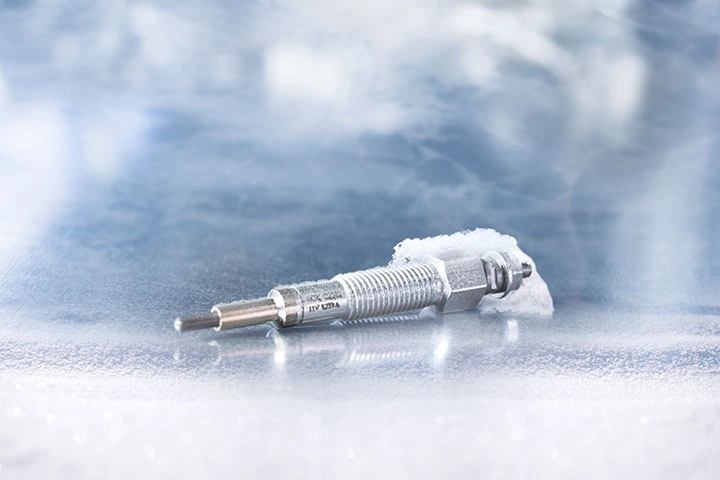Glow Plugs: The exhaust system heroes... And why a summer service is key

We all know that when temperatures fall, diesel engines need the heat from glow plugs to get them started. As a result, we are used to servicing glow plugs in the colder months. But did you know that glow plugs are also essential for exhaust gas cleaning and low emissions? Or that they play a role in preventing clogging of the exhaust gas recirculation (EGR) valve? They even help with regenerating the diesel particle filter (DPF).
Kai Wilschrei, Manager Technical Services Aftermarket EMEA at NGK SPARK PLUG EUROPE confirms: “These days glow plugs go well beyond enabling a cold engine to start. They have also taken over a range of year-round tasks to make diesel combustion cleaner and comply with increasingly strict environmental regulations. This means that proactive glow plug checks are more essential than ever before, in any season. From managing emissions to reducing repair costs elsewhere in the engine, glow plugs simply can’t be allowed to fail.”
Here is the expert’s four-point guide to how glow plugs matter to diesel drivers – beyond cold starts.
1. Efficiency and emissions
When outside temperatures are low, glow plugs enable ignition to take place by using electricity to heat up to very high temperatures, warming the air in the combustion chamber. Thanks to continuous developments in glow plug technology this pre-glow can happen extremely quickly – for example, the latest generation high temperature ceramic (NHTC) plug from NGK SPARK PLUG reaches 1,000 oC in under two seconds. “The fast pre-glow of these advanced plugs enables the engine to start immediately and run more smoothly,” Wilschrei explains. “Pollutants and soot emissions are minimised, playing a vital role in ensuring EURO standards compliance.”
Today’s glow plugs even contribute to cleaner exhaust emissions after the engine starts running. By generating a ‘post-glow’ for several minutes after ignition, they help to ensure the diesel fuel completely combusts during the warm-up phase.
2. Keeping the EGR valve clean
Glow plugs also benefit the health of the EGR valve by producing what is known as an ‘intermediate glow’. “At low exhaust gas temperatures the EGR valve tends to carbonise, affecting its ability to reduce the car’s particle and nitrogen oxide emissions until ultimately the valve needs expensive replacement,” continues the expert. “Carbon build-up can be reduced however if the electronic control unit (ECU) activates the glow plugs while the engine is running. This creates an intermediate glow that prevents the exhaust gas temperature from falling below the critical level.”
Top plugs for intermediate glow NGK SPARK PLUG’s NHTC range is ideal for the intermediate glow needs of the EGR valve, DPF and combustion chamber. They can glow for more than ten minutes at up to 1,350 oC; making them indispensable original equipment for many car makers. |
3. Regenerating the DPF
Intermediate glow is equally vital to diesel particulate filter health. Although the DPF has a continual mission to reduce diesel car emissions, it only has limited capacity to capture and store exhaust soot. It therefore has to be regularly ‘regenerated’ (trapped carbon must be burned off) in order to continue filtering effectively. Wilschrei continues: “To regenerate, the DPF must be heated up to more than 600 oC for around ten minutes. The ECU therefore initiates a number of measures to achieve this, one of which is a so called “regeneration glow” from the plugs of well over 1,000 oC, even if the engine has warmed up. This raises the combustion chamber temperature, which in turn increases the exhaust gas temperature; supporting DPF regeneration. Defective glow plugs, however, can lead to the point that the DPF cannot be regenerated, causing clogging, which in turn means an expensive DPF replacement will be necessary.”
4. Preventing over-cooling
Glow plugs also contribute to another aspect of combustion. “It’s vital that the combustion chamber is prevented from over-cooling when driving downhill,” reveals Wilschrei. “During thrust phases, the car’s exhaust gas temperature drops. When it accelerates again, the engine then initially emits too much exhaust gas and soot. Activating an intermediate glow from the plugs in the thrust phases counteracts these problems.”
Being continually vigilant about defect glow plugs is therefore vital for the protection of other parts, Wilschrei concludes. “Glow plugs have such wide-ranging benefits it’s essential to check they are in good condition, and replace them if needed – even in summer,” he says. “As well as minimising your emissions you’ll keep costs down by ensuring a long life for the DPF and the EGR valve!”
Six steps to trouble-free glow plug changes
|
For more advice on glow plug trouble-shooting and replacement, visit NGK SPARK PLUG’s videos at www.tekniwiki.com or on YouTube.
 Niterra Blogs
Niterra Blogs








